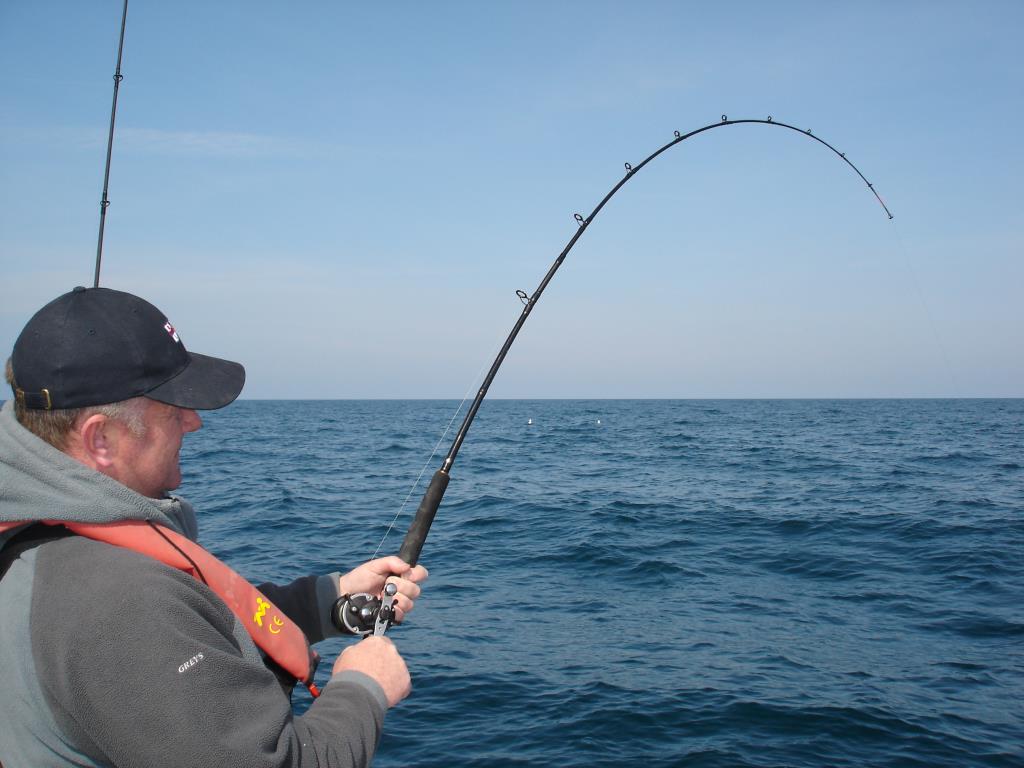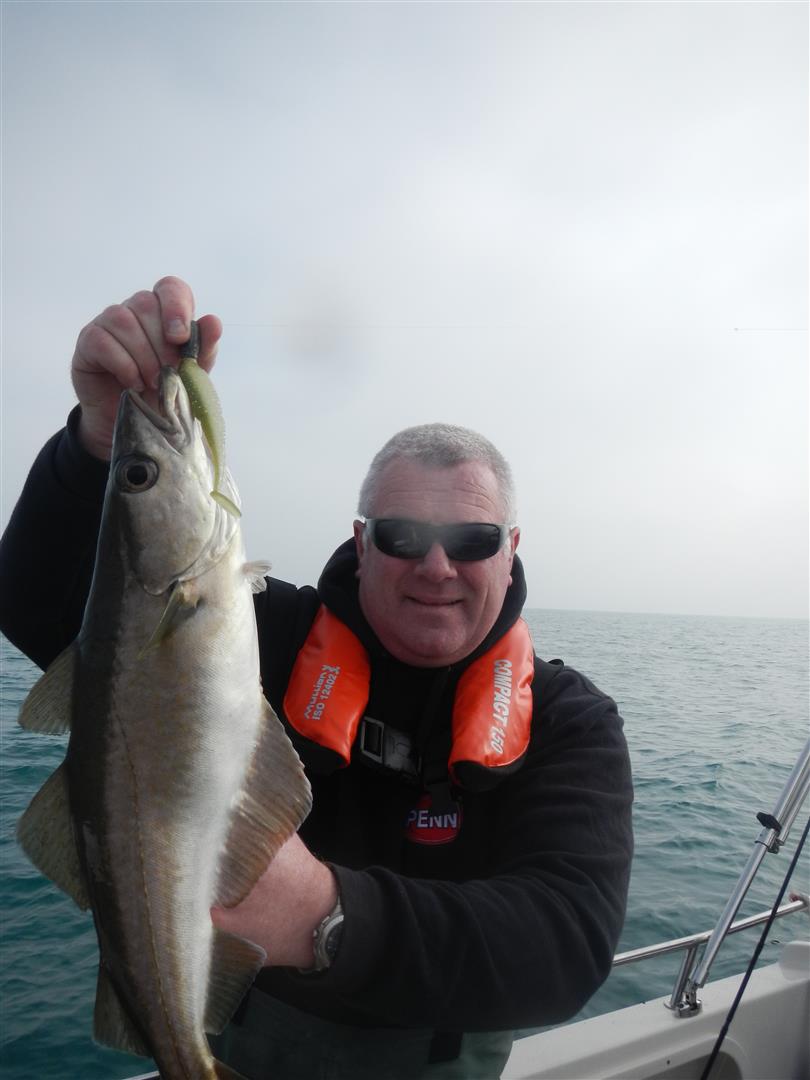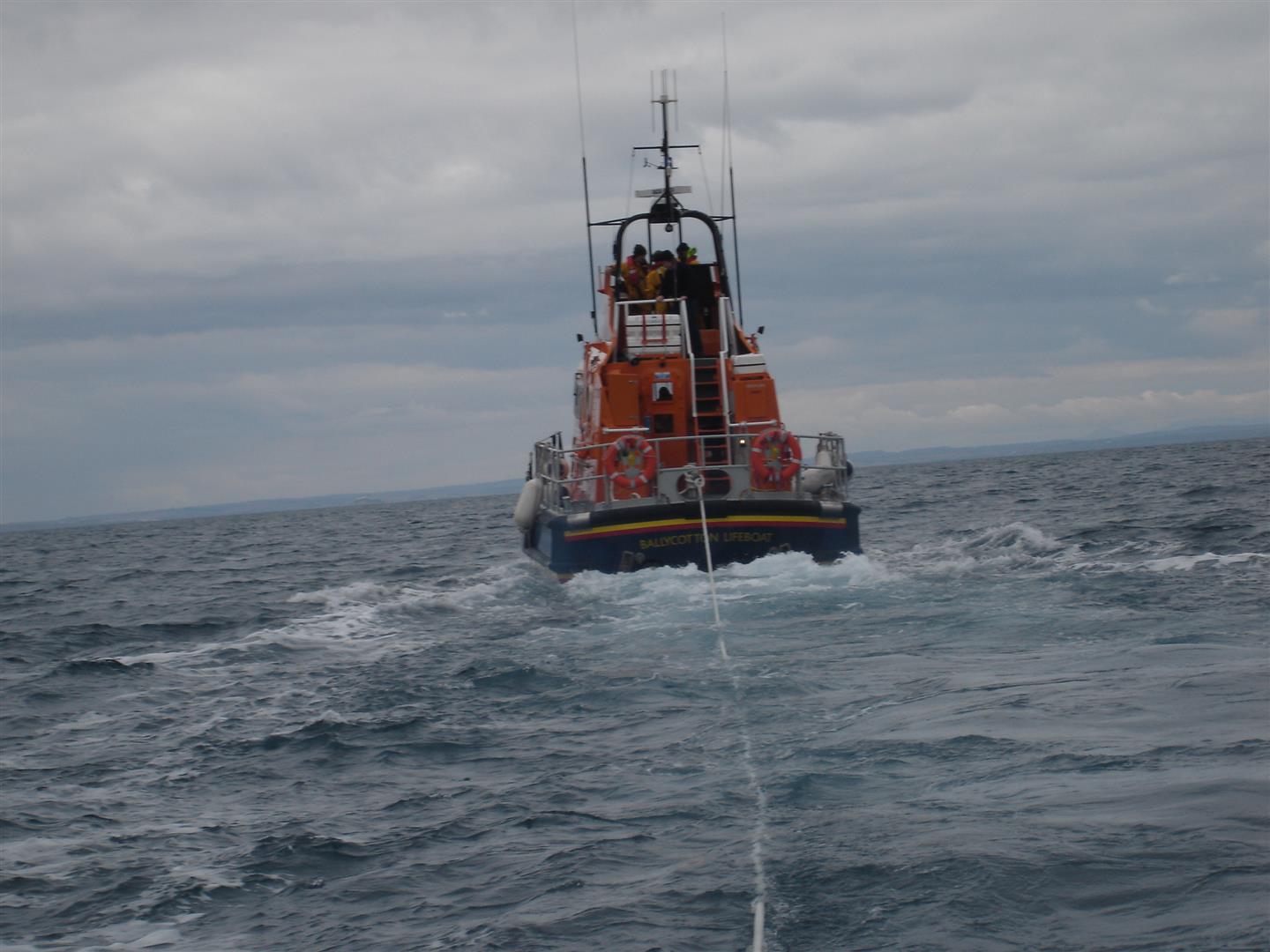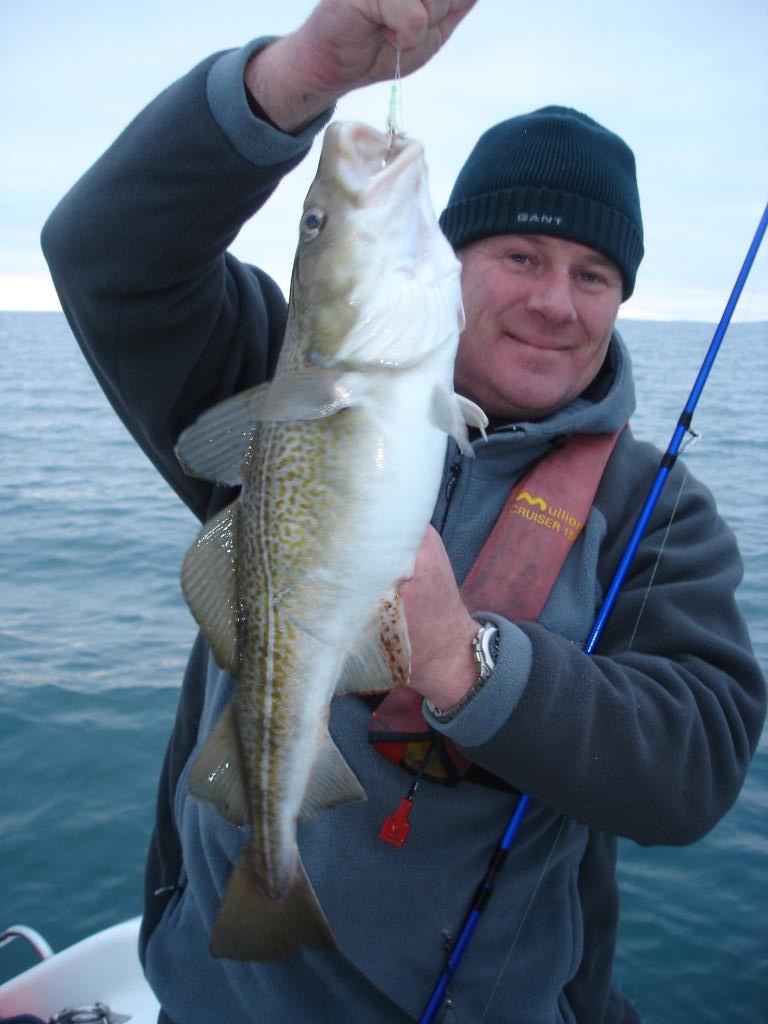* The Night Shift – Winter Bait Fishing


Into the Night
We may have passed that notable date in the anglers’ calendar -the autumn equinox- but there are many short days still to run before things begin to look brighter. What do you do when you get purely fed up waiting for that weather window that never seems to fall at the weekend and you feel that the winter is dragging on longer than… than… well, a wet winters week I suppose? When not driven purely by desperation, night fishing from the boat is an option thought about by many but tried only by a few, and a good option it can be too!
Shore anglers fish in the dark all through the winter. Some of the better shore sessions take place in darkness on lonely beaches all round the coast. Dropping water temperatures lure hard fighting cod, savagely competitive whiting and usually massive amounts of hard biting coalfish into shallow inshore waters. Even though those coalies can drive the bass anglers demented the sport that they offer cannot be ignored.

There are many out there that would say that if we were meant to fish in the dark we would have been given better night vision but in recent seasons we have fished from SKUA in night time more often. A winter session in darkness can be great sport and can become a bit of an expedition. It is not the kind of trip that can be undertaken on a whim, there is a good deal of organising to be done before you can have a safe and enjoyable session. The weather is obviously an important factor, if not the most important factor. We are always waiting for the ideal conditions. High-pressure systems seem to be increasingly rare during the winter, but a crisp still evening is what we are looking for. A still frosty evening is perfect but the associated temperature drop must be catered for as well.
Recently a half decent weather window opened up for us, mid-week as usual. There was nothing for it; we began to plan a trip that would see us launching in the early evening and we would fish into the darkness, until the lack of action or the cold had us scurrying for the shore. As with any boat trip preparation is everything. Bait is important. Firstly, over lunchtime the previous day we head to some local worm beds and we dig some ragworm. We have some crab frozen down and this will do nicely for the species that we are chasing. We also raid our stock of frozen mackerel; this will tempt the whiting and will be perfect for tipping off crab or worm baits. Finally we carry a box of squid in a small cooler box should we feel the opportunity is there to catch a blonde ray or we want to rig a big pennell bait for cod.

On the day things are looking good. The forecast calm weather has moved in bringing some watery winter sunshine, you can almost smell the cod! We gather our tackle and wet gear and load SKUA. We are trying to cover as many possibilities as we can so we tackle up our light boat rods and we include spinning rods as well. We will not be plugging or spinning but these rods are the perfect way to deliver a bass bait accurately. Our plan is simple: if the cod and whiting refuse to play ball, if the tide is too strong to fish for rays we will anchor up and fish for bass.
As we have not had a trip for a couple of weeks and it is wintertime, we work our way through our winter checklist to make sure everything is working properly. Rather than fitting the electronics on the slipway they are fitted at home and tested. When we hitch the boat to the jeep we connect and test the winch. All of these jobs are done at home before setting off for the slipway. At least if we discover a problem we will be able to fix it here where all our tools are. We carry a comprehensive tool kit but it is still prudent to do the checks at home. Wintertime and long lay-ups are not kind to boats. Batteries run down, damp weather is not kind to electrical connections. Remember this is a nighttime trip and the last thing we need to fail is any part of the electric system. Under normal circumstances we would give the engine a start, using a half-barrel or the engine flushing attachment however the Mariner F100 has a fabulous pre-start check system. When the ignition is turned on the entire engine electronic systems are tested, including the battery, if there is enough power and everything is working the engine will give the OK by sounding a beep. It is a time saving system but I reckon that if the boat has been laid up for a long period I would prefer to start the engine to ensure that the cooling system is functioning properly. We finish by checking our navigation lights and loading the rest of the gear.

Two important considerations when night fishing are light and heat. A good light source will make the trip so much more pleasurable and it is impossible to fish properly when you are cold. We have a simple solution to the lighting question. We use a 12v fluorescent lead lamp, the type you see mechanics using. We attach this to the grab handles at the front of the cuddy. We use our spare battery to power the lamp, you will notice that we have separate power sources for our lighting and the critical systems on board, this gives peace of mind when fishing over a long session. We both have headlights for the close up work of rigging traces and baiting. Sean has a modern rechargeable LED headlamp while I make do with a small LED headlamp that did not cost the earth but performs well, it is a model done by Surecatch. The weather is not going to be so cold as to warrant wearing a floatation suit so Sean kits up with neoprene chest waders over layers of warm clothes topped off by his Greys Fleece smock. I opt to wear my usual bib ’n brace over a couple of long sleeved t-shirts and a light fleece, this is all topped off by my Greys fleece smock. I think I have harped on enough about the “greatest piece of angling clothing” but I do love my Greys fleece! I pull on a pair of neoprene socks for the first time this year; these socks combined with my neoprene boots have never left me with cold tootsies yet!
The walker at the top of the slipway looks with raised eyebrows as he sees us preparing to launch. It is three o’clock and while the watery sunshine is bright the sun is rapidly heading for the west. The sun is not getting very high in the sky at this time of the year and on some days it can be blinding but today will see darkness fall before five thirty. After parking up the trailer I have a chat with the walker, as much to convince him as myself that we are not in fact mad, just slightly cracked!
We are on the water! We discuss our plan while waiting for the engine to warm up a little. This is a crucial part of the session. We head from the slipway directly to our first mark taking a wide berth around all navigation and marker buoys. We take care on our trip out because will be using our track on the GPS to navigate safely back to the slipway in the dark. We take a few drifts while we still have some light but as the light fades we anchor up to begin fishing in earnest. We are anchored within the harbour. We are not positioned close to the shipping lanes. I suppose it would be prudent to contact Harbour Operations to let them know we are here but we are happy we are lit up well. We leave our anchor light on and the fluorescent lead lamp provides plenty of visible light. We monitor channel twelve, the Harbour Ops channel, as well as channels six and sixteen. We can hear all the comings and goings and we feel quite relaxed.

We are fishing the Harbour Rock. We hope to catch some codling here. We are using two-hook ledgers (2/0). The tide is starting to flood and push into the harbour. We need six-ounce leads to hold bottom. We have baited up with ragworm and crab baits. All is perfect: sea conditions, weather, tide and bait the only thing missing is the fish! We have had a tough winter so far. The water temperatures have not dropped quickly this year. We hope that this must be affecting the cod as they have not been around in the usual numbers yet. There have been good runs of cod further east in Waterford and Youghal. That was earlier in the winter, the back end of last year, but we have yet to see good numbers of fish within Cork Harbour. The shore anglers are suffering as well. Water temperatures are still dropping off so there is still a slim chance that we could get a good run of fish yet this year. The normal angling seasons have been turned on their head this year, we were catching mackerel in January after all! With only a couple of codling and an amount of small whiting for our trouble we up our anchor and head to fish for some bass.
Travelling in the dark can be disconcerting but very exhilarating. To be safe we both stand up and peer over the cuddy into the gloom. We are clipping along at twenty knots and it is important to watch both the GPS and the surrounding waters. Buoys can appear very quickly. The trick is to adopt a speed that suits the conditions and the limited visibility. The down side to standing up while driving is the cold. By the time we get to one of our bass marks you could nearly snap off my ears! I have donned a pair of gloves for travelling, I cannot seem to get used to fishing with gloves on but always give my hands every chance to heat up while travelling. We have had many sessions cut short due to loosing the use of the tips of cold fingers. A sure sign of the cold is the fact that the anchor chain seems warm as I slip it over the bow.
We change tactics here, opting to use our spinning rods. It is completely dark, we are relying on our GPS and fish finder to locate the mark. There is a narrow channel that the bass patrol. It requires an accurate cast; being outside the channel will result in catching little more than crabs. A spinning rod with fixed spool reel is easier to use for this style of fishing rather than a multiplier. We are using between one and two-ounce leads so the multiplier and shorter rod would struggle anyway. I am using a Berkley Sensor-One an eleven foot rod rated at 10 to 25 gram casting. These rods will cope well with average fish up to six pounds weight and will give the fight of a lifetime on any bigger fish. We fish light traces of 20lb fluorocarbon with 1/0 hooks. I like short shank hooks for crab bait and Sakuma Mantas are very sharp and strong.

One downside to fishing in the dark is the photography. Cameras do not like the cold. Make sure you give your lens plenty of time to acclimatise to the cold. If you pull your camera from the bag there is a good chance the lens will fog up. Get the camera out early and leave it clear in it’s own time.
Take plenty of shots you may just get a few good ones to choose from. Use a flash if necessary. Remember that a flash will reflect of any shiny or reflective surfaces and will hide the background. A flash tends to make the picture brighter so it is hard to get a picture that gives a “real feel” of the conditions. I particularly find it difficult to get the settings right as the movement of the boat causes problems with slow shutter speed. In short, sorry if the pictures are not perfect we are only amateurs after all!

The cold is really starting to bite now everything on the boat is coated with a fine condensation. It is beginning to get harder to bait up as my fingers are struggling with the chill. I get a ferocious bite; the first bass of the session is giving a great account of itself. What cold? As John is fighting his fish I reel in rebait and cast back out within seconds! The fish isn’t a monster but he is a good spirited fish. This is our first attempt at this mark in the dark so we are happy to get some result. In the space of a half an hour we land a further three bass and as is fairly normal with bass they either go off the feed or move on. There is nothing for us to do but to move on as well. We head back for the slipway as it is approaching ten o’clock. Travelling back we drive along the track we made on the GPS on our way out. This is the safest way to travel in the darkness. We know we will not hit anything that is anchored and all we have to watch for is for floating debris. We are half expecting the Customs or the Gardai to be waiting for us when we return, I’m sure the walker I met earlier reckoned we were smuggling something illegal. Well he was shaking and scratching his head as I walked away! The slipway is dark and still. We touch down on the slipway and both get out onto dry land. We do not drive the boat onto the trailer in the dark, it is safer to hold the boat at the slip and back the trailer down, less chance of scratching gelcoat.

It take a while to get the circulation back to cold stiff fingers, wrapping them around a warm glass usually does the trick! We head for home happy men, we have had our fix, we can take whatever the weather throws at us for another couple of weeks, roll on summer!












